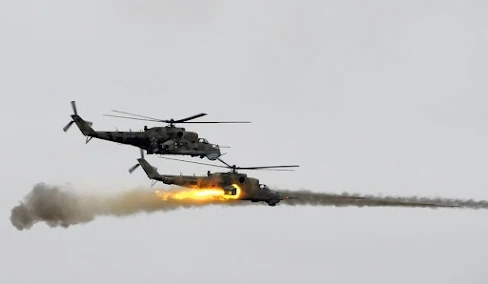 |
| File:Миль Ми-24-25-35, Вязьма - Двоевка RP57606.jpg |
International Military - Details are limited, but there are reports indicating that a pair of Ukrainian Mi-24 Hind attack helicopters crossed the border into Russia. There is no major indication at this time that this attack was some kind of tactic.
In early April, Friday morning (Ukrainian local time), videos began appearing on social media showing a darkened Mi-24 making a rocket attack proceed at a large oil storage facility in Belgorod.
Reporting from The Drive, this is located not far beyond the north-eastern border of Ukraine. The Mi-24's ability to sneak inside Russian airspace is simply amazing. Moreover, he carried out an attack in the early hours of the morning against the oil storage facility in Belgorod.
According to The Aviationist, if confirmed, the attack would represent a significant achievement for Ukrainian forces. Because it would affect Russian fuel supplies near Kharkiv, which had been under siege since the start of the invasion. Although 'Hind' is the NATO code name of the Mi-24, the Soviet nickname 'Crocodile' arguably evokes the character of the large, toothed armored helicopter.
Unlike the agile American Cobra and Apache attack helicopters, the Hind is larger and heavier. Reporting from 19fortyfive.com, in addition to the Mi-24's armament-a built-in machine gun or an automatic cannon depending on the model.
These include six hardpoints on the pilot wing that can carry a pod of unguided rockets, anti-tank missiles, auxiliary weapons, and bombs. The Hind has a passenger compartment that can carry eight infantry for air raid operations.
The remaining operational Hinds are essentially the Mi-24P Hind-Fs (armed with two side-mounted 30-millimeter cannons), the Mi-24V Hind-Es with a 12.7mm machine gun in the chin turret, and the Mi-24VP with a 23-millimeter gun. millimeter cannon chin.
